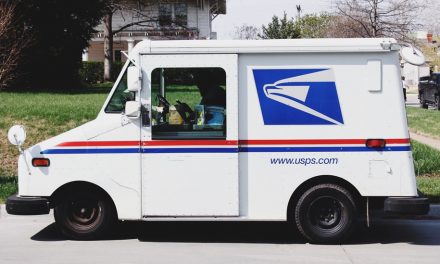
Magazines in a mail-strom of rate hikes
ADVERTISING AGE 22nd October 2001
MAGS IN A MAIL-STROM OF RATE HIKES
After a pair of increases this year, Postal Service wants
another 10% By Jenna Schnuer
For magazine publishers, it's an instance where increasing frequency is not a welcome development.
For the third time in 2001, the industry is grappling with the issue of postal rate increases, and though the latest proposed increase wouldn't take effect till 2002 at the earliest, it could cost the magazine industry another $200 million at a time when it can ill afford the additional hit.
Following a 9.9% increase for magazines in January and a 2.6% increase in July, the latest proposal, or rate case, now under review at the Postal Rate Commission will likely up the cost of mailing periodicals by another 10% (AA, Sept. 17).
"We're way in excess of the rate of inflation. We get into a vicious circle where higher mail rates drive out mailers and those left have to make up the difference," says Dan Brewster, CEO of Gruner & Jahr USA Publishing.
But things could be worse. When talk of the current proposed increase began last February, it looked like the magazine industry might have to deal with a 25% hike.
"We're certainly not dancing in the streets, but because of a lot of hard work by us and our colleagues, it's not as bad as it could have been," says James Cregan, VP-Washington at the Magazine Publishers of America. Mr. Cregan says publishers spend more than $2 billion a year with the U.S. Postal Service and that every 1% increase equals a $20 million hit on the industry.
"All of the rate cases have been monster bait-and-switch exercises. They come out with rates that are alarmingly high, and then they adjust it down," says Kent Brown-ridge, general manager of Wenner Media. "They get a lower rate that's still more money, but the howlers and screamers feel better." Mr. Brownridge says Wenner shells out nearly $20 million annually to the Postal Service for its periodicals.
"If you take all increases over the last 15 years, annualized they're about 3%. It doesn't seem so bad," Mr. Brownridge says. "With this increase, on an annualized basis, it represents probably about twice what we've had in the past and will be about 6% or 7% annualized."
may hit in late 2002
As it stands now, the Postal Rate Commission will wrap up the case by mid-2002. If the increase were implemented at the close of the case, as is usually the case, it would put a crunch on mailers for the 2002 holiday season.
"Efforts now are to get the increase as low as possible and to put it off until the first quarter of 2003," says MPA President-CEO Nina Link.
"We need to work together as well as push at them," Ms. Link says, adding that the MPA advocates cost-cutting measures for the Postal Service such as hiring freezes, consolidating facilities and increasing automation of periodicals class.
No postal rate case would be complete without industry banter about alternate postal delivery.
Mr. Brownridge says that every time he starts researching alternative postal delivery, he ends up "with a report that shows that the post office is a great deal."
STUDYING ALTERNATIVES
But some industry executives continue to study alternatives.
Jim O'Brien, formerly CEO of Publishers Express, an alternate postal company that went out of business in 1996, says: "We tried to bypass the Postal Service, and 20/20 hindsight says it was a mistake. We had to hang things off of doors, and consumers didn't like it." Mr. O'Brien, now director of distribution and postal affairs at AOL Time Warner's Time Inc., says Publish-ers Express should have delivered products to local post offices and let them deliver magazines the last mile. "The Postal Service is the best in the business at the last mile," he says. "Why not let them do that? Everybody loves their postman."
Another alternative, though admittedly "hard to do," would be for publishers to jointly create a central bureau of subscriptions to bundle magazines together, says Chip Block, vice chairman of USAPubs, a national marketer of magazine subscriptions, and publishing strategist with Ziff Davis Media. He also offers up the possibility of a deal with United Parcel Service or FedEx Corp., but says that since they've backed rate increases against the MPA in the past, "they're kind of the devil at the party."
With a viable method of alternate postal delivery a long way off, publishers are pondering how to soften the impact of the latest rate case.
"The biggest opportunity I see is to work with major printers to figure out better sortation, palletization and transportation into the Postal Service," says Mr. Brewster. Gruner & Jahr spends $50 million annually to mail periodicals.
ANTITRUST CONCERN?
Even as publishers and printers look at alternatives that could lead them to work together, they'll have to avoid running afoul of another governmental entity-the Depart-ment of Justice and its laws against monopolies.
Mr. O'Brien says the rate case offers mailers the opportunity to whittle down costs by delivering mail to the Postal Service destination delivery units, sectional center facilities or area distribution centers. "This is a new thing with this rate case," he says. "You'll see a creation of a whole new industry of co-mailing and drop-shipping."
Smaller publishers, however, may not see this extra work as a golden opportunity.
"There's a huge discount for companies that can move mail very far down the postal stream without the post office having to do that," Wenner's Mr. Brownridge says. "Well, guess who can do that?"
He believes that talk of publishers working together to co-mail won't ever get past talk. "It's ludicrous. Work together? Ha."
One smaller mailer looking for a cost-cutting possibility is Emmis Publishing. Meta Carson, the regional publisher's circulation director, says the company is studying the Postal Service's Ride Along program, which allows publishers to polybag advertising with magazines and mail it for a lower rate than the advertisers can get on their own.
"We're actually looking to maximize those capabilities. We offer that to advertisers because we can do that cheaper," Ms. Carson says.
Publishers' greatest-but most unlikely-hope is for postal reform.
"Everybody has called for the reform of a system that is clearly broken, even the former postmaster general. I've heard that the best opportunity for postal reform is a complete collapse" of the system, Mr. Brewster says.
But reform, which hasn't necessarily been the most popular topic in Congress, will almost certainly "be back-burnered on Capitol Hill" because of the Sept. 11 attack, says Val Scansaroli, Gruner & Jahr's director of distribution and postal affairs.
"It's a situation nobody seems to really want to deal with in Washington. There are so many interests," says USAPubs' Mr. Block, adding, "Until systemic reforms, it's awfully hard to see how to get out of the mess."
Page S10; Volume 72











